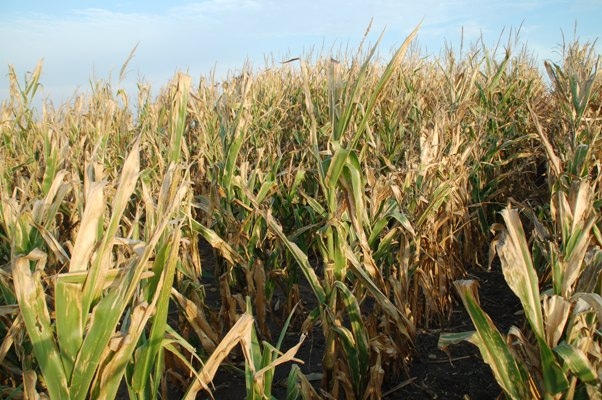Tax Relief is Available for Producers Hit by Drought
January 16, 2013

Help is available for some midwestern livestock producers facing higher income tax bills because the drought forced them to cull and sell more animals than normal in 2012, two Purdue Extension agricultural economists say.
The lack of forages and the high cost of feed led many producers who might normally have carried livestock through the winter to instead sell them at weaning. More sales at weaning usually would mean more taxable income in 2012.
But there is help in the form of income deferment and averaging.
“Federal income tax law may allow farmers affected by weather-related conditions to defer reporting of this income, in some cases, to even out incomes and avoid potentially higher taxes,” says Michael Langemeier, associate director for Purdue's Center for Commercial Agriculture. “Farm income averaging, which was enacted after the weather-related provisions, is another alternative that could result in lower income taxes for producers in some situations.
Effective tax management involves consideration of several tax years rather than just minimizing the current year's tax bill.”
Producers forced to sell draft, breeding or dairy animals because of weather have a two-year reinvestment period.
That means producers don't need to report the income if it is used to buy qualified replacement animals within two years of the end of the tax year in which animals were sold, says George Patrick, who specializes in farm tax management.
Although this provision doesn't require producers to live in a designated disaster area, producers need to show that weather conditions forced them to sell more livestock than is typical for their businesses.
“For example, a beef producer who normally sells five cows per year might have sold 20 cows in 2012 because of limited forage and feed supplies,” Patrick says. “Gains from the sale of the extra 15 cows would not have to be reported as income if the producer purchased at least 15 qualified replacement animals before the end of 2014. The new livestock must be used for the same purpose as the livestock that was sold. Thus, beef cows must be replaced with beef cows. Similarly, dairy cows must be replaced with dairy cows.”
Livestock producers who sold extra animals due to weather but don't intend to replace them also could qualify for an exception that allows them not to report receipts as taxable income in 2012.
“Producers whose principal business is farming can postpone reporting these receipts as income for one year for both income and self-employment tax purposes,” Patrick says.
In this scenario, only livestock sales beyond what is normal for each business would qualify for deferral.
Langemeier says one example of this would be a producer who normally farrows and feeds 2,000 pigs each year. Drought, which resulted in a disaster declaration for the county where the hog farm is located, forced the farmer to sell 1,000 pigs as feeder pigs in 2012 instead of feeding them and selling them as market hogs in 2013. The producer's normal practice is to sell no feeder pigs, so income generated from the sale of the 1,000 head can be deferred until 2013.
If the feeder pigs sold at $35 per head, that means $35,000 of income could be deferred to 2013, he says.
More of Patrick and Langemeier's comments about tax management can be found in their publication, “Drought, Livestock and Income Taxes,” available for free download via Purdue's Center for Commercial Agriculture at http://www.agecon.purdue.edu/commercialag/resources/taxmgmt/index.html.
More in-depth information about farm income tax management is available in the Internal Revenue Service publication, “The Farmer's Tax Guide,” found at http://www.irs.gov by searching “Publication 225” in the publication search menu.
You May Also Like



